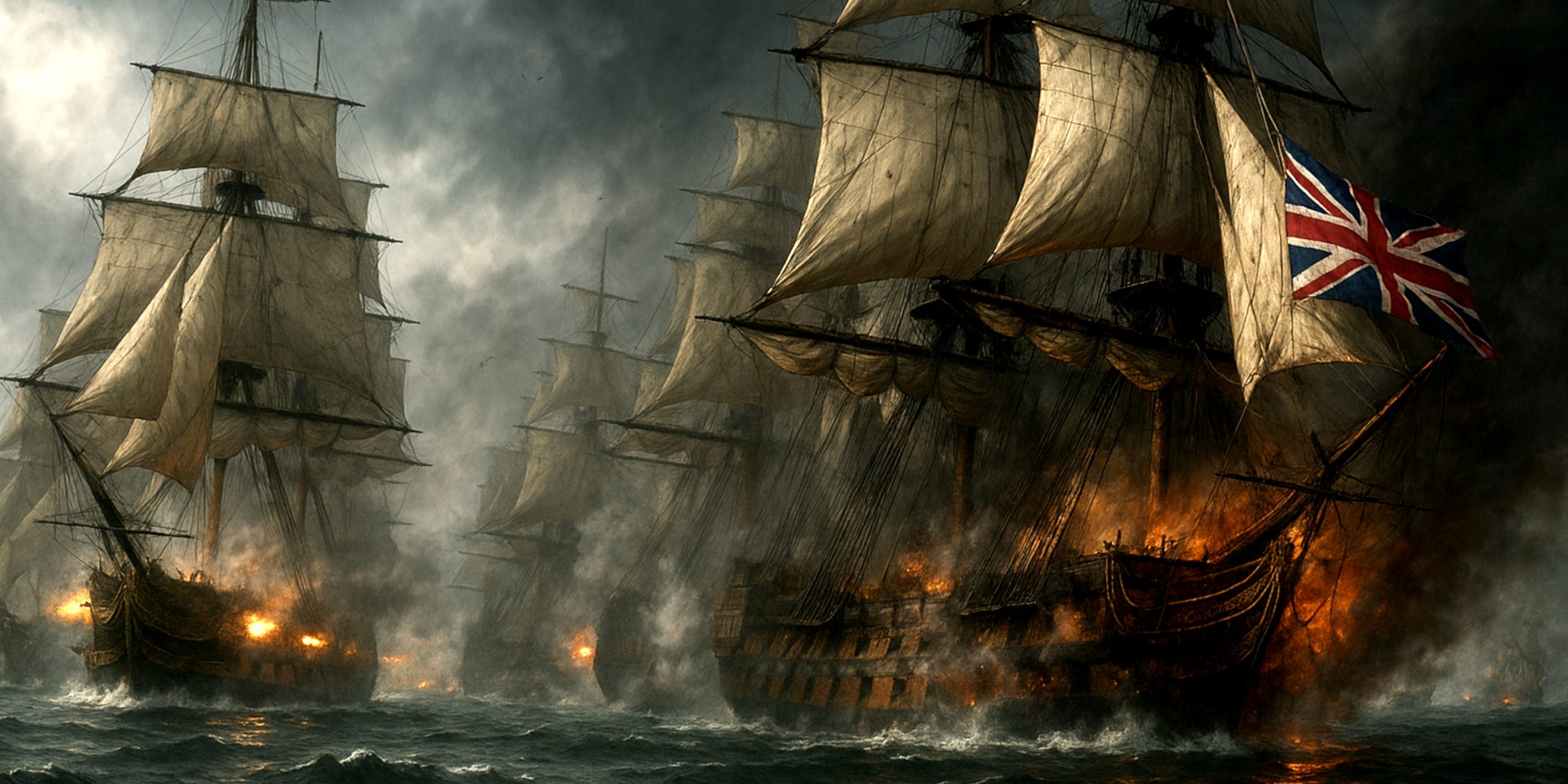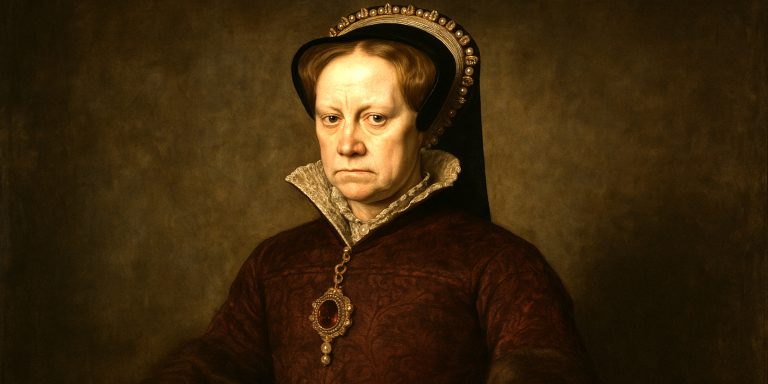
The Battle of Trafalgar is one of those moments where history feels strangely close, almost loud in the mind. It remains the Royal Navy’s most celebrated victory, and despite centuries passing, you can still sense the strain of canvas and the crack of broadsides if you let your imagination wander. As a historian, I have always found Trafalgar oddly reassuring. It is the one eighteenth to nineteenth century battle where Britain did exactly what it said it would do, then did it better than anyone expected, largely through stubbornness and very confident gunnery.
Fought on 21 October 1805 off the coast of southwest Spain, Trafalgar set the seal on British command of the seas. Admiral Horatio Nelson faced the combined fleets of France and Spain and broke them apart with a tactic that looked reckless on paper but proved brutally effective when the guns opened. Nelson’s death turned a triumph into a national legend, although he likely would have found the theatrical mourning a bit excessive.
Background
Napoleon hoped to draw British naval forces away from the Channel long enough to invade Britain. His Franco Spanish fleet under Admiral Villeneuve was meant to lure, distract and overwhelm. Instead it drifted between ports, squandered opportunities and eventually found itself blockaded and forced out to sea. Nelson shadowed them with the kind of patience that suggests he knew exactly when Villeneuve would make a mistake. The mistake arrived soon enough.
Forces
A quick overview of who sailed into battle that morning.
Order of battle
| Side | Commander | Ships of the Line | Frigates | Total Guns (approx) |
|---|---|---|---|---|
| Great Britain | Admiral Horatio Nelson | 27 | 4 | About 2,150 |
| France and Spain | Admiral Pierre Charles Villeneuve | 33 | 7 | About 2,650 |
The Anglo Spanish French fleet had more ships and guns, but the British advantage lay in training, signalling discipline and gunnery. Also in the fact that Nelson refused to wait for the perfect arrangement and simply committed.
Leaders
British
| Name | Role | Notes |
|---|---|---|
| Horatio Nelson | Commander in Chief | Favoured aggression, relied on experienced captains, famously wrote the signal England expects that every man will do his duty. |
| Cuthbert Collingwood | Second in Command | Led the lee column, steady as a millstone, and somehow kept sarcastic comments quiet until after the fighting. |
| Thomas Hardy | Captain of HMS Victory | Nelson’s trusted officer, present at his death. |
Franco Spanish
| Name | Role | Notes |
|---|---|---|
| Pierre Charles Villeneuve | Commander | Capable but hesitant, trapped between Napoleon’s orders and reality. |
| Federico Gravina | Spanish Commander | More decisive than Villeneuve, mortally wounded during the battle. |
| Admiral Alava | On board the massive Santísima Trinidad | Commanded one of the largest ships afloat, a floating fortress that still could not avoid being hammered by British fire. |
Arms and Armour
Sailors in 1805 carried a mixture of standard naval equipment and whatever personal weapons they fancied. Boarding actions made close combat weapons vital, although the real killing power came from the broadsides.
Swords used
- British naval officers commonly carried the 1804 Pattern Royal Navy officer’s sword, a curved sabre with a gilt brass hilt.
- Mariners used cutlasses, often the 1804 Pattern Naval Cutlass, short and sturdy with a protective guard.
- French officers favoured the Flottille de Boulogne sabre and earlier AN IX or AN XI cavalry sabres adapted for naval use.
- Spanish officers used the straight bladed M1799 infantry sabre and various colonial patterns with brass shells.
Firearms and artillery
- Naval pistols with single shots, often the Sea Service pistol, were used during boardings.
- Muskets such as the British Short Land Pattern musket allowed precision from the tops, and these sharpshooters played a part in Nelson’s death.
- The real force came from the guns. British crews averaged two broadsides for every one from their opponents, a staggering advantage.
Protection
Sailors wore minimal armour. A thick coat and a grim sense of luck were as close as they got to protection. Fragments of wood, iron and rope were more dangerous than any sword, and many casualties came from splinters fired out like natural shrapnel.
Battle Timeline
Morning, 21 October 1805
Two British columns advance slowly and deliberately into the combined fleet’s curved line. The Franco Spanish ships attempt to deploy but confusion spreads.
Late morning
HMS Victory leads Nelson’s column and receives heavy fire. Nelson refuses to retaliate until close range. Collingwood’s Royal Sovereign crashes into the enemy line first, delivering a broadside that one officer described as herculean.
Early afternoon
The battle becomes a series of chaotic melees as British ships break the enemy line. The Santísima Trinidad and Bucentaure suffer catastrophic damage. Musket fire from the Redoutable wounds Nelson.
Mid afternoon
The Franco Spanish centre collapses. Several enemy ships strike their colours. Captures rise with alarming speed.
Late afternoon
A storm gathers. British ships try to secure their prizes, many of which later sink or are lost to the weather.
Nelson dies below decks, murmuring Hardly, I have done my duty, which is as close to serene as any mortally wounded admiral could manage.
Contemporary Quotes
From Collingwood, written after the battle with understated pride:
The enemy did their best but were unable to resist the well directed fire of the British Squadron.
From a sailor aboard Victory:
The noise was beyond anything. It shook a man all through, and the smoke sat so thick that I could see no further than my hand.
From a French officer after capture:
Their fire was infernal. One wondered if their guns were worked by machines.
Archaeology
Trafalgar’s underwater remains are scattered across a broad area, shaped by storms, salvage and centuries of shift. Archaeologists have identified wreck sites belonging to both sides, including Spanish and French ships that sank during or after the battle. Cannon clusters, hull timbers and musket parts have all been studied. Some material has been raised, although much remains in situ out of respect for the thousands who died.
Modern surveys use multibeam sonar to map the seabed, revealing a patchwork of debris fields that help reconstruct the chaos of the battle and the storm that followed. Naval historians rely heavily on these finds, although the sea keeps most stories to itself.
Legacy
Trafalgar ended any realistic chance of a French invasion of Britain and cemented British naval dominance for more than a century. Nelson’s tactical daring became a standard reference for naval officers, often quoted with varying degrees of accuracy. The myth of Nelson grew swiftly, polished by admirers and political necessity alike.
It was a brutal battle, noisy and close, shaped by skill but also by luck. As a historian, I find Trafalgar fascinating not only for its scale but for the uncomfortable truths beneath the celebration. It was a victory bought with heavy casualties, a reminder that even the most polished legends have splinters.
Watch the documentary:



